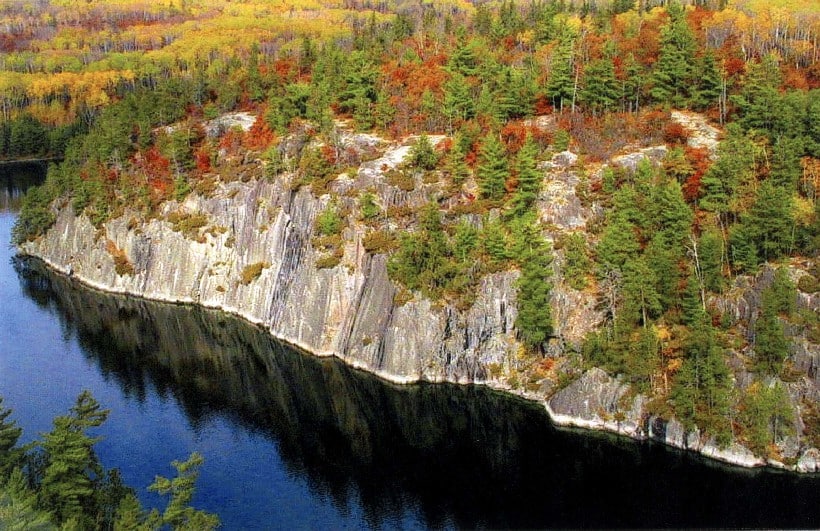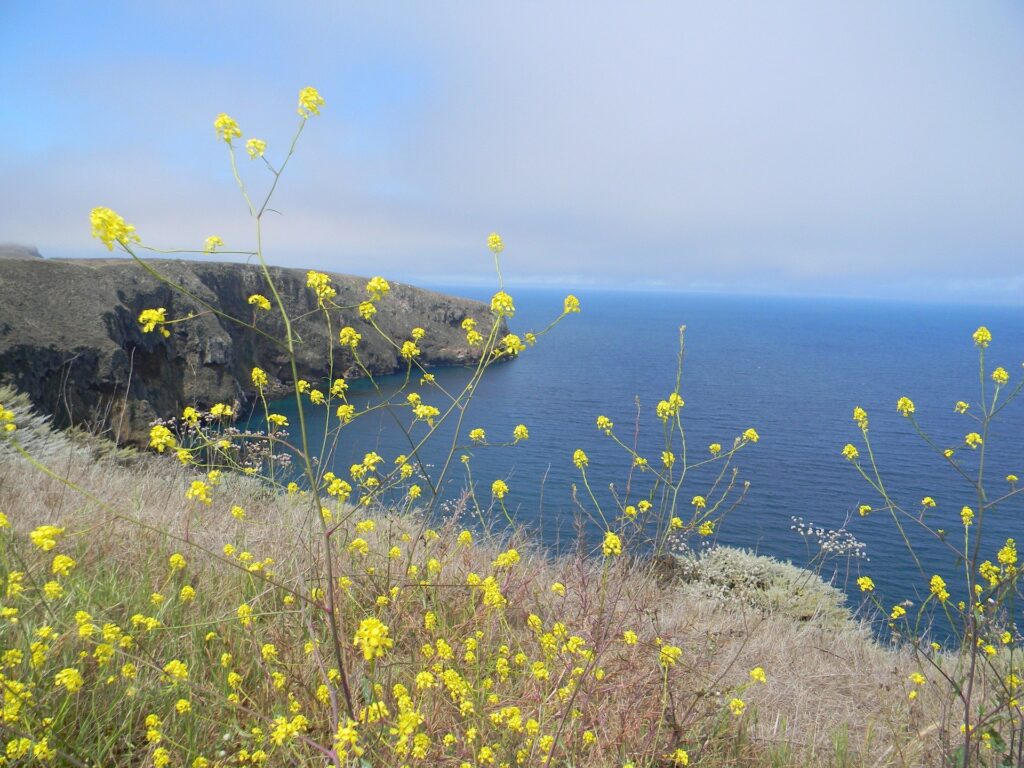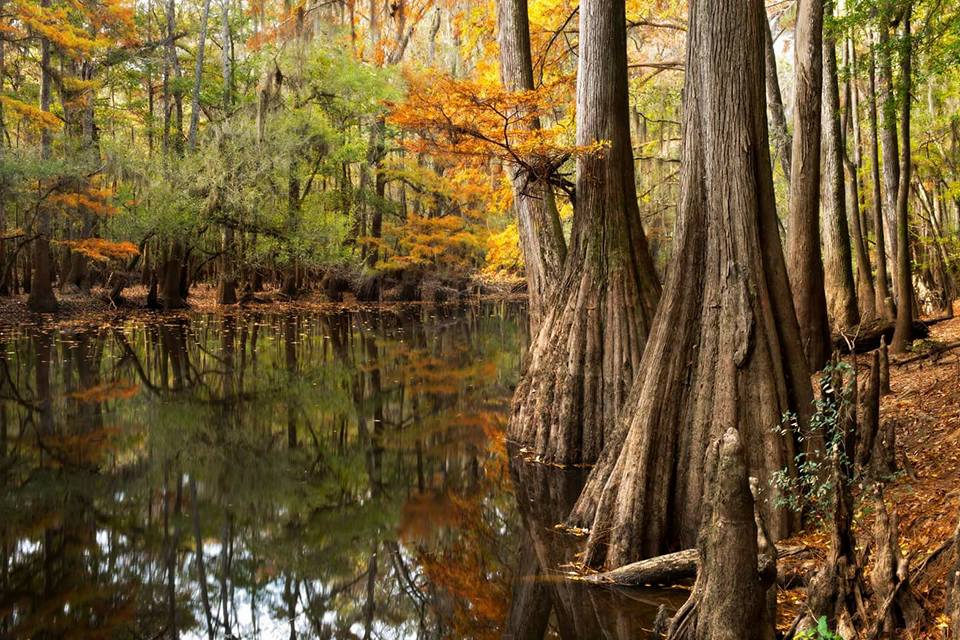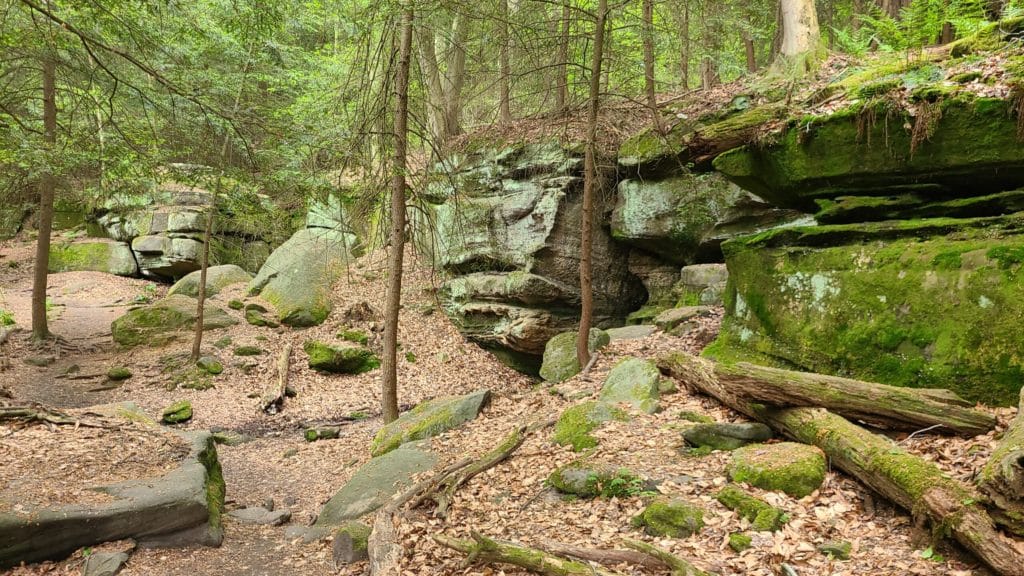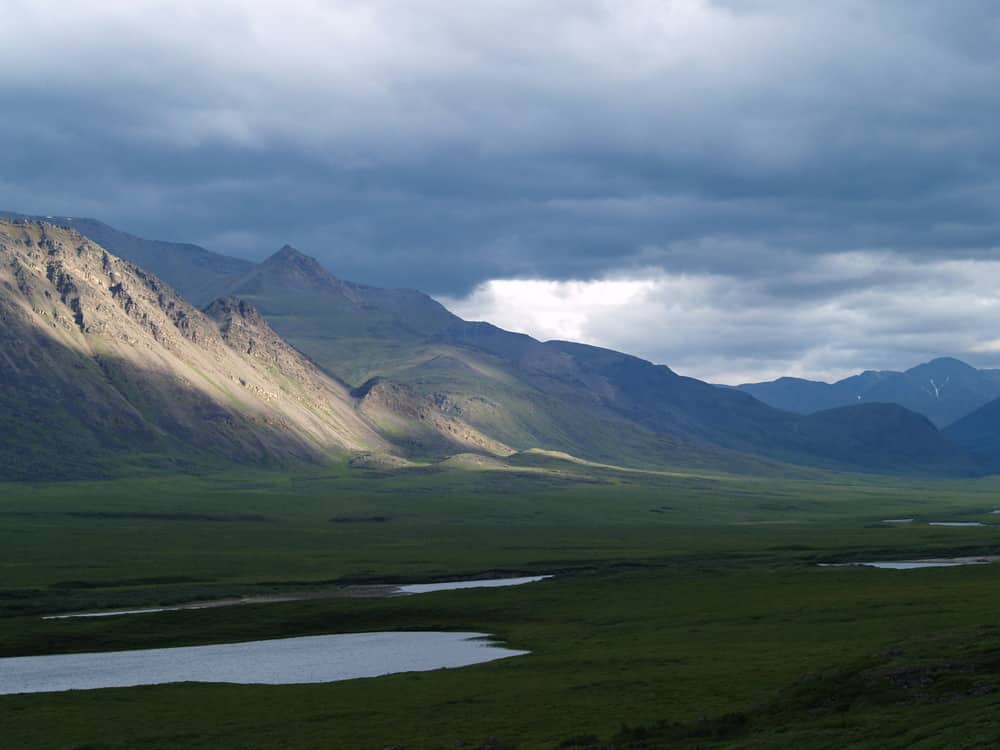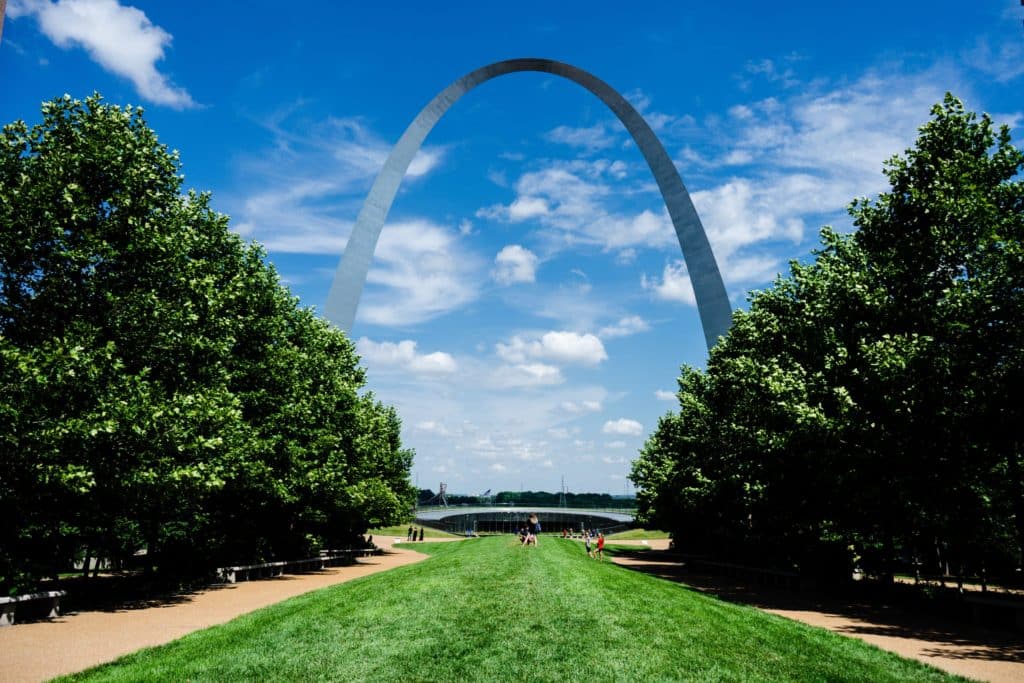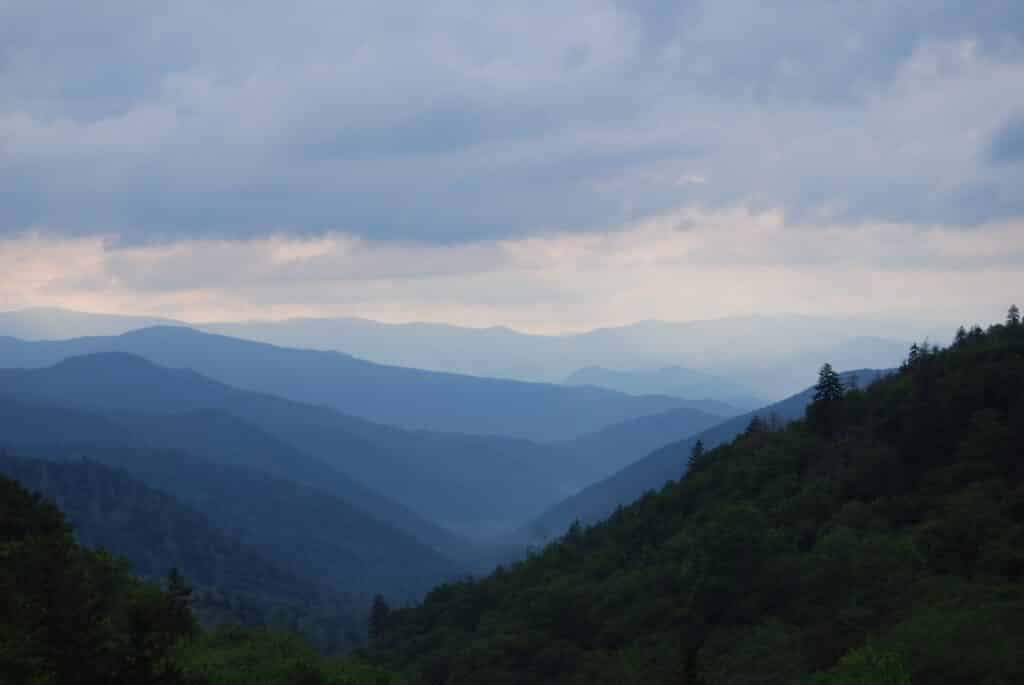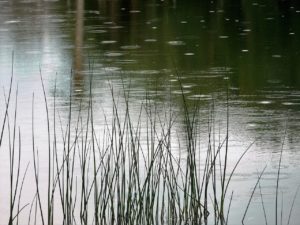For those on a budget or those just looking for an economical way to see some of America’s natural wonders, there are plenty of ways to experience the natural parks for free. Active military members and their families can get a free America the Beautiful Pass (an $80 value) which will allow them to see all the national parks at no cost. Those with a permanent disability, you’re entitled to the free Access pass.
For the rest, the parks below all have NO ENTRY FEE. From Florida to Alaska and plenty of places in between, there are plenty of parks where you can enter and explore for free.
FLORIDA
Located in Biscayne Bay, between Miami and Key Largo is Biscayne National Park. It’s everything you’d expect from a park in South Florida. Accessible only by boat, the park the home to beautiful coral reefs, tropical fish, dolphins, and manatees among others. Onshore, you can visit the iconic Boca Chica Lighthouse, which has become a symbol of the park. And although entrance to the park is free, you may have to pay for transportation to the islands if you don’t have your own.
Biscayne national park is a beautiful place to visit any time of year. In general, though, the best time of year to visit is during the months of December through February. During this time, the weather is cool and dry, which makes it ideal for hiking and camping. Additionally, the water is typically calm during this time of year, making it perfect for kayaking and swimming.
CALIFORNIA
Pristine, remote islands mere miles from America’s second largest city, accessible only by boat or plane. An uncrowded sanctuary for wildlife, empty beaches, and uncrowded trails. A Mediterranean climate with year-round high temperatures in the ‘70s. Channel Islands National Park provides all of that and more. Situated off the coast of Southern California, five of the islands make up the national park and are surrounded by the Channel Islands National Marine Sanctuary.
Although entrance to the park is free, you will have to pay for transportation to the islands if you do not have your own. You can also rent snorkeling equipment or other gear you may need.
The most popular time of the year to visit is June through August. Temperatures are steady year-round, but the summer months provide longer days and less precipitation.
SOUTH CAROLINA
Nowhere else do you have the chance to kayak, canoe or hike through a park that boasts the largest intact expanse of old growth cypress and hardwood forest in the country. The forest sits on the floodplain of Congaree and Wateree Rivers. Several times a year, the rivers spill over their banks onto the floodplain, nourishing the cypress, loblolly pine, sweet gum, hickory, water tupelo, and oak trees populating the forest. But the parks swamps are also home to a wide array of diverse wildlife, including alligators, turkeys, otters, turtles, and a wide variety of snakes. Established in 2003, Congaree National Park is a short drive from Columbia, SC.
There is no bad time to visit Congaree National Park, but the best time of year is undoubtedly autumn. As the leaves begin to change color, the park takes on a whole new look, and the cool weather is perfect for hiking and camping. Fall is also the busiest time of year at Congaree, so if you want to avoid the crowds, spring or summer might be a better option. However, no matter when you visit, Congaree National Park is sure to impress. With its towering trees and abundant wildlife, it’s truly a nature lover’s paradise.
OHIO
The story of Cuyahoga Valley National Park is a story of reclamation and history. Serving as the backbone of the park is the Cuyahoga River, once so polluted it regularly caught fire in the industrial areas on its banks in Cleveland. The stories made national news and spurred the beginning of the nation’s environmental movement. Fifty years later, the river that runs through the park is as picturesque and lively as any in the Midwest. Wildlife driven away by pollution and humans have begun returning the river to its natural state, including blue herons, beavers, otters, and black bears.
Cuyahoga Valley National Park is a beautiful place to visit any time of year. In the spring, the park comes alive with flowers and wildlife. The temperatures are mild, making it a perfect time to explore the many hiking trails. Summer is a popular time to visit, as the weather is warm and sunny. However, the crowds can be larger than usual. Fall is an ideal time to visit if you’re looking for quieter surroundings. The leaves change color, creating a stunning backdrop for hikes and other activities. Winter is also a great time to visit, as the park is blanketed in snow. Whether you’re looking for peace and quiet or want to enjoy the beauty of nature, Cuyahoga Valley National Park has something for everyone.
ALASKA
Remote and wild, Gates of the Arctic National Park and Preserve is the least visited national park for a reason. It’s situated above the arctic circle and has none of the amenities you’d expect in a national park. No roads, trails, campgrounds or lodging of any kind. The only way to get into the park is by plane or on foot. But for those hardy souls who venture in, the memories can last a lifetime. Established in 1980 and located in Alaska’s Brooks Range, the untouched wilderness of the park spans over 13,000 square miles. In the short summer, there are endless opportunities for hiking, rafting, fishing, and experiencing a true wilderness. Expect to share the park with grizzly and polar bears, wolves, caribou, moose, and others.
And while it’s an amazing place to visit year-round, summer is definitely the best time to go. During the summer months, the days are longer and the weather is warmer, making it ideal for hiking and camping.
During the winter, much of the park will be inaccessible. Dangerously cold temperatures and dark skies make for an adventure that few will want to attempt. Only experienced hikers or campers should attempt to tackle this wild wilderness in winter.
MISSOURI
Gateway Arch National Park is unique among the nation’s national parks. First off, it’s the smallest. Less than one square mile, the home is located in downtown St. Louis. It’s the home to the Gateway Arch, standing at 630 feet and towering over the Mississippi River. The “Gateway to the West” was completed in 1965 and is the city’s most recognizable landmark. The park, formerly the Jefferson National Expansion Memorial, was established as a national park in 2018. In addition to the Arch, the famous Old Courthouse is located within the park.
The best time to visit St. Louis is between April and October. It can occasionally get cold in the winter, although much of your visit to the park will be indoor anyway. While entrance to the park is free, there is a fee to travel to the top of the arch.
NEVADA
Nestled on the eastern edge of Nevada near the Utah border lies a land of dry desert punctuated by mountains and unusual life. The bristlecone pines in Great Basin National Park are some of the oldest living organisms on earth. Perfectly adapted to their rugged and arid environment, the trees can live for thousands of years. Imagine seeing trees that were alive before the time of the Roman Empire. You can also drive on the highest road in Nevada. The park is one of the least-visited in the park system, so if you go to hike or camp, you should have no problem finding solitude.
The best time to visit for nice weather is May through September. High temperatures are usually warm, but not too hot. In the winter, the days can be cold and average lows can be about 20 F.
The summertime is the busiest time of the year in the park, though it rarely suffers from overcrowding. June through September are the busiest months, although visiting after Labor Day and into early October should bring nice weather and smaller crowds.
TENNESSEE / NORTH CAROLINA
Spanning both North Carolina and Tennessee lies America’s most visited national park. In Great Smoky Mountains National Park you’ll find rolling green mountains, lush valleys, diverse wildlife and traces of the area’s Appalachian culture. In addition to the amazing scenic drives, the park is also good for hiking, backpacking, fishing, and biking. The park is also home to black bears, elk, coyotes and bobcats among others. And if you go at the right time, the park is one of the premier spots to witness the fall foliage.
For the best weather, visit spring through fall. You’ll find generally warm daytime temperatures. The wintertime can bring snow and cold nights.
Great Smoky Mountains is the most visited national park, so avoiding crowds can be a challenge. Visit on weekdays if possible in the spring or summer. The busiest month in the park is October when the fall foliage is at its most vibrant. If you want to visit then, plan far in advance and be prepared for crowds and traffic.
ARKANSAS
Hot Springs National Park is a unique combination of natural wonders and historic architecture. Subterranean water is heated and forced up through the surface, forming the many hot springs that populate the park. In the 1800’s, these hot springs were a popular retreat for the wealthy, who sought out the supposed healing powers of the springs. Because of this, bathhouses and other buildings sprung up to accommodate the visitors. Today, these buildings make up the visitor’s center and other park buildings.
The summer months offer the warmest temperatures, although you may experience severe humidity during those times. For the warmest weather and least chance of rain, visit in August. Temperatures can be chilly in the winter, especially in the evenings and mornings.
For crowds, the peak month is July. Visitors taper off a little in August and then more in September, although that also begins the rainy season. December and January see the fewest visitors.
ALASKA
The massive Harding Icefield covers 700 square miles in Alaska, and a portion of it can be found in Kenai Fjords National Park. Deep fjords and islands, teeming with bald eagles, black bears and sea lions lead into a glacial alpine environment. The park covers over 660,000 acres and is accessible via Seward, Alaska. The park has several trails, including the Harding Icefield Trail, an 8.2 mile loop that will give you an up-close look at the parks most defining feature. There are also boat tours and kayaking available.
The best time to visit the park is during the summer, when you’ll generally have temperatures in the 60’s and long days.
During the winter, you’ll find cold temperatures and limited daylight.
Crowds are generally not an issue at the park.
ALASKA
Sitting above the Arctic Circle in Alaska is the remote and wild Kobuk Valley National Park. The park is an untouched wilderness with no roads or amenities. The park is also known for its massive sand dunes, formed by glaciers in the last ice age, although the park contains no glaciers currently. In the park you’ll find mountains, the massive Kobuk River and amazing wildlife. The park contains massive herds of caribou, along with bears and wolves. Every spring and fall, the herd of a quarter million caribou pass through the area during their migration.
Summertime is the best time to visit the park. Summertime temperatures can reach 80 degrees Fahrenheit. Also, be prepared for the sun to be visible the entire day from early June to early July.
Wintertime temperatures can be brutal, with long nights, snow and closed facilities.
ALASKA
Remote and wild, untamed, and untouched. A land of rugged peaks, clear streams, and amazing wildlife. Glacier-capped volcanoes and brown bears and wolves. Such is Alaska’s Lake Clark National Park and Preserve. About a hundred miles from Anchorage, the park has no roads and limited amenities. You’ll need to take a plane to Port Alsworth just to get into the park. But the park offers unlimited opportunities for hiking, backpacking and back country camping. It’s also a popular spot for bear watching.
For the best weather, visit in June or July. You’ll have long days and temperatures generally in the 60’s. Winter nights are long and cold and much of the park is inaccessible at that time.
WASHINGTON
An alpine landscape with over 300 glaciers. Soaring mountain peaks, turquoise lakes, and steep valleys with views of snow-capped peak. You might think you’d have to travel to Alaska, but it’s all in North Cascades National Park, about a three hour drive from Seattle in Washington. Black bears and even the occasional grizzly bear call the park home. It’s also an amazing park for hiking, boating, biking, rock climbing and camping. And for the adventurous, don’t miss Cascade Pass, one of the great hikes in the national parks.
Summer is the best time to visit the park. Temperatures are in the 60s and 70s and there is less precipitation. The rest of the year you can expect colder temperatures and a greater chance of rain or snow.
The park does not suffer from overcrowding, so you can visit any time of year.
CALIFORNIA
Soaring more than 300 feet in the air, the Redwood tree is the largest in the world. It’s also the namesake and highlight of California’s Redwood National Park. The park is intertwined with the state parks, so you’ll visit both. The parks are unlike any other in the system. The enormous trees are generally between 800 and 1,500 years old, although they have been known to reach 2,000 years. There are numerous trails for hiking and backpacking that will give you an up-close look at these wonders. The parks are along the Pacific coast, a few hours north of San Francisco. While there is no camping in the national park, you’ll find several options in the state parks and surrounding areas. You’ll find black bears, elk, and beaver in the park as well.
The best time to visit is during the summer. The dry season runs between May and September. You’ll also find warmer temperatures which are good for easy hiking and camping. November through March can often be chilly and rainy.
The summer months also see the most visitors, but crowds are generally not a problem, especially during the week.
MINNESOTA
Set in the far reaches of northern Minnesota, Voyageurs National Park is a land of lakes, islands, forests, and vast undeveloped wilderness. Water is essential to the park and the main mode of transportation is by boats and kayaks. Lodging in the park is limited and many people decide for the unique experience of exploring the park in houseboats. The boats can be rented and the park’s campsites are only accessible by water. The spots have limited amenities, although there are spots to tie up the houseboats or kayaks. In the park you’ll find moose, wolves and beavers among others. And don’t miss the historic Kettle Falls Hotel, where you can stay for the night or just stop in for a drink.
You can visit the part any time of year, depending on what you’re looking for. The summer months have the warmest weather and July is the busiest month.
If you’re looking for cold weather and winter hiking or sports, the number of visitors drops in the wintertime.
ALASKA
Pristine, untouched wilderness covered with snow-capped mountains and clear mountain lakes. The home to wolves, all three species of North American bears (brown/grizzly, black and polar), lynx, sea lions and bison, among others. You’ll find all this rugged majesty in Wrangell-St. Elias National Park, the largest of the national parks. At over 13 million acres, the park provides the opportunity for endless adventure. Here you’ll find the largest concentration of glaciers in North America. For those looking to hike, backpack, camp or raft, you’ll never run out of new places to see and explore.
For the best weather outside, visit from May through August. For winter sports and activities, you can visit anytime between October and April. Be prepared for frigid temperatures in the winter.
The park is rarely overcrowded, so you can visit any time of year and avoid people.

